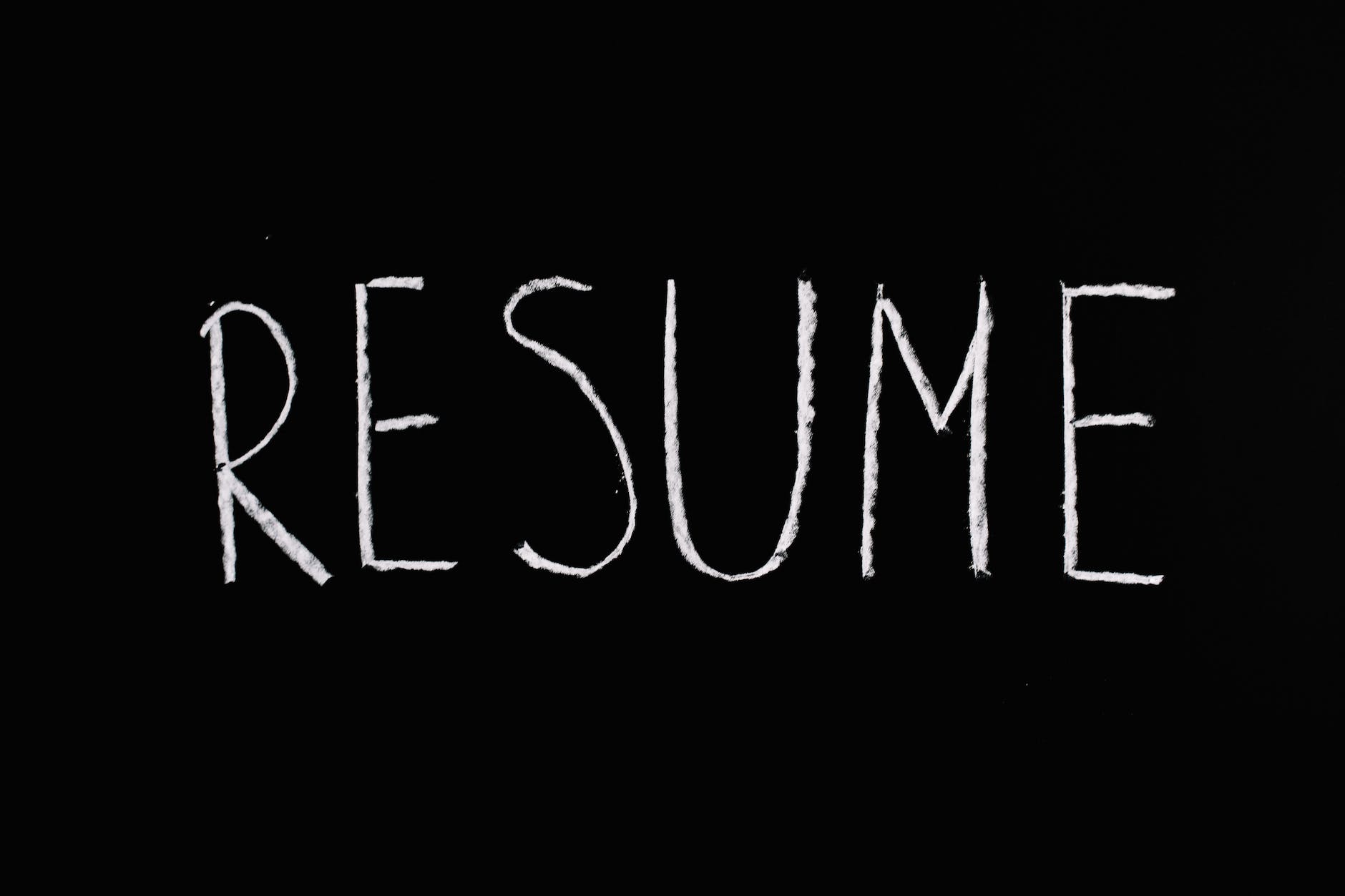When it comes to applying for a job or pursuing new career opportunities, the first step is often preparing a document that showcases your qualifications and experiences. However, confusion often arises between the terms “CV” (Curriculum Vitae) and “resume.” While both of these documents serve the purpose of presenting your professional background, there are distinct differences between them. In this article, we will explore the contrasting characteristics of a CV and a resume, enabling you to understand their unique roles and how to tailor each document effectively.

Table of Contents:
- What is a CV?
- 1.1 Purpose and Length
- 1.2 Content and Format
- 1.3 Common CV Sections
- What is a Resume?
- 2.1 Purpose and Length
- 2.2 Content and Format
- 2.3 Common Resume Sections
- Key Differences Between a CV and a Resume
- 3.1 Length and Extensiveness
- 3.2 Focus and Target Audience
- 3.3 Personal Information and Objectives
- 3.4 Academic and Professional Experiences
- 3.5 Skills and Achievements
- 3.6 Tailoring for Different Industries
- When to Use a CV or a Resume
- 4.1 Academic Positions
- 4.2 Research and Scientific Fields
- 4.3 International Job Applications
- 4.4 Creative and Design Roles
- 4.5 Corporate and Business Positions
- How to Create an Effective CV
- 5.1 Organizing Your Information
- 5.2 Highlighting Academic Background
- 5.3 Emphasizing Research and Publications
- 5.4 Including Professional Affiliations
- 5.5 Showcasing Teaching and Leadership Experience
- How to Create an Effective Resume
- 6.1 Tailoring Your Resume for the Job
- 6.2 Highlighting Relevant Skills and Achievements
- 6.3 Using Action Verbs and Quantifiable Results
- 6.4 Including Professional Development
- 6.5 Showcasing Volunteering and Extracurricular Activities
- Conclusion
What is a CV?
1.1 Purpose and Length
A Curriculum Vitae, commonly known as a CV, is an extensive document that outlines your entire professional history, including academic achievements, research experience, publications, and more. It is typically used when applying for academic positions, research grants, or opportunities in the scientific field. Unlike a resume, a CV has no length restrictions and can be several pages long.
1.2 Content and Format
A CV provides a comprehensive overview of your educational background, research projects, publications, awards, professional memberships, and other relevant information. It emphasizes the depth of your expertise and accomplishments. The format of a CV is typically structured and chronological, highlighting your academic achievements and research experience.
1.3 Common CV Sections
Common sections found in a CV include:
- Personal Information
- Objective or Personal Statement
- Education
- Research Experience
- Publications
- Awards and Honors
- Professional Memberships
- Conferences and Presentations
- Teaching Experience
- Grants and Funding
What is a Resume?
2.1 Purpose and Length
A resume is a concise summary of your skills, experiences, and qualifications tailored to a specific job application or industry. It is commonly used in the corporate world and focuses on showcasing relevant information to demonstrate your suitability for a particular role. Unlike a CV, a resume is typically limited to one or two pages.
2.2 Content and Format
A resume highlights your professional experience, skills, achievements, and qualifications directly related to the job you are applying for. It aims to capture the attention of hiring managers quickly and concisely. The format of a resume is usually reverse-chronological, listing your most recent experiences and achievements first.
2.3 Common Resume Sections
Common sections found in a resume include:
- Contact Information
- Professional Summary or Objective
- Work Experience
- Education
- Skills
- Certifications
- Achievements
- Projects
- Volunteer Work
- References
Key Differences Between a CV and a Resume
3.1 Length and Extensiveness
One of the primary differences between a CV and a resume lies in their length and extensiveness. While a CV can span several pages and contain detailed information about your academic background, research, and publications, a resume is typically limited to one or two pages, focusing on key skills, experiences, and achievements relevant to the specific job you are applying for.
3.2 Focus and Target Audience
Another significant distinction is the focus and target audience of each document. A CV is primarily used for academic and research-related applications, targeting positions in universities, research institutions, or scientific fields. A resume, on the other hand, is tailored for job applications in various industries, focusing on relevant skills and experiences that align with the requirements of a specific role or company.
3.3 Personal Information and Objectives
CVs often include personal information such as date of birth, nationality, marital status, and a photograph. In contrast, resumes typically exclude these details, focusing solely on professional qualifications. Additionally, while a CV may include an objective statement or a personal statement highlighting your career goals, a resume usually features a professional summary that highlights your key qualifications and achievements.
3.4 Academic and Professional Experiences
CVs place significant emphasis on academic achievements, research experience, publications, and teaching roles. It provides an in-depth overview of your academic background and contributions to your field. Resumes, on the other hand, highlight professional experiences, internships, work history, and specific accomplishments related to the job at hand.
3.5 Skills and Achievements
While both CVs and resumes may include a section dedicated to skills and achievements, the level of detail and presentation can vary. CVs tend to focus more on research and academic-related skills and accomplishments, while resumes highlight a broader range of transferable skills and professional achievements.
3.6 Tailoring for Different Industries
CVs are typically more standardized and follow a set format within academic and research communities. Resumes, however, can be tailored and customized to suit different industries and job roles. It is important to adapt the content, style, and emphasis of your resume to match the specific requirements and expectations of the target industry or employer.

When to Use a CV or a Resume
4.1 Academic Positions
If you are applying for academic positions such as professorships, research fellowships, or tenure-track positions, a CV is the appropriate document to showcase your academic achievements, research publications, and teaching experience.
4.2 Research and Scientific Fields
In research-oriented fields, such as scientific or technical positions, a CV is typically preferred to present your extensive research experience, publications, patents, and conference presentations.
4.3 International Job Applications
In some countries, such as the United Kingdom and Europe, the term CV is more commonly used, regardless of the position or industry. It is essential to familiarize yourself with the local norms and requirements when applying for international job opportunities.
4.4 Creative and Design Roles
If you are pursuing a career in a creative field, such as graphic design, photography, or writing, a resume allows you to showcase your portfolio and highlight relevant projects, exhibitions, or published work.
4.5 Corporate and Business Positions
For positions in the corporate world or business-related roles, a resume is typically preferred. It enables you to emphasize your professional experience, skills, and accomplishments relevant to the specific job or industry.
How to Create an Effective CV
5.1 Organizing Your Information
When creating a CV, organize your information in a clear and logical manner. Use headings and subheadings to separate different sections and make it easy for the reader to navigate through your document. Start with personal information and then proceed with education, research experience, publications, and other relevant sections.
5.2 Highlighting Academic Background
Emphasize your academic background by providing details about your degrees, institutions, areas of study, and any honors or awards received. Include the titles of your theses or dissertations, as well as any relevant coursework or projects.
5.3 Emphasizing Research and Publications
In the research section, provide a summary of your research experience, highlighting projects, methodologies used, and outcomes. List your publications in a standardized format, including journal articles, conference papers, book chapters, and any other scholarly works.
5.4 Including Professional Affiliations
Demonstrate your engagement in professional organizations by including memberships to relevant societies or associations. Highlight any leadership roles or committee participation within these organizations.
5.5 Showcasing Teaching and Leadership Experience
If you have teaching experience, include details about the courses you taught, the level of students you instructed, and any innovative teaching methods or technologies you employed. Additionally, highlight any leadership positions you held within academic or research settings.
How to Create an Effective Resume
6.1 Tailoring Your Resume for the Job
Before writing your resume, carefully review the job description and identify the key skills, experiences, and qualifications sought by the employer. Tailor your resume to align with these requirements, highlighting relevant experiences and achievements that make you a strong fit for the role.
6.2 Highlighting Relevant Skills and Achievements
Create a dedicated skills section where you list relevant technical skills, software proficiencies, language fluencies, or industry-specific certifications. Additionally, include specific achievements and quantifiable results that demonstrate your contributions and impact in previous roles.
6.3 Using Action Verbs and Quantifiable Results
When describing your work experience, use strong action verbs to showcase your accomplishments and responsibilities. Quantify your achievements whenever possible by including metrics, percentages, or numbers to provide context and demonstrate the extent of your impact.
6.4 Including Professional Development
Highlight any relevant professional development courses, workshops, or certifications you have completed. This demonstrates your commitment to staying updated with industry trends and your willingness to invest in continuous learning and growth.
6.5 Showcasing Volunteering and Extracurricular Activities
Include any volunteering experiences or extracurricular activities that showcase transferable skills or demonstrate your engagement in community service. This helps provide a well-rounded picture of your abilities and interests beyond your professional experience.
Conclusion
In conclusion, understanding the distinctions between a CV and a resume is crucial when preparing your application materials. A CV is an extensive document that focuses on academic achievements, research experience, and publications, while a resume is a concise summary tailored to a specific job application. By recognizing the unique characteristics of each document and tailoring them effectively, you can enhance your chances of securing the desired position. Whether you are pursuing an academic career or seeking opportunities in the corporate world, knowing when and how to use a CV or a resume will help you present your qualifications in the most impactful way.
Discover more from THE KENYAN JOB FINDER
Subscribe to get the latest posts sent to your email.
